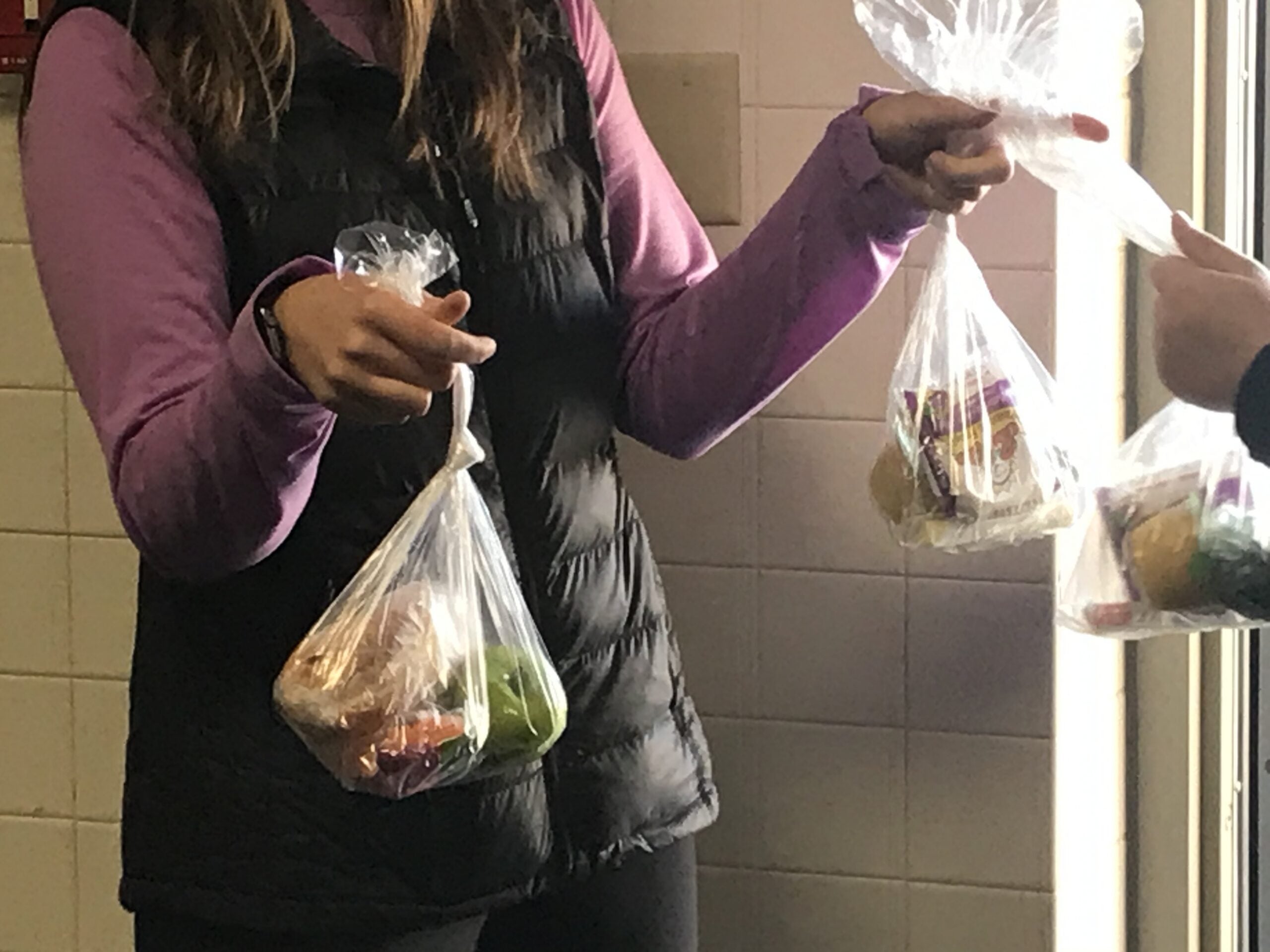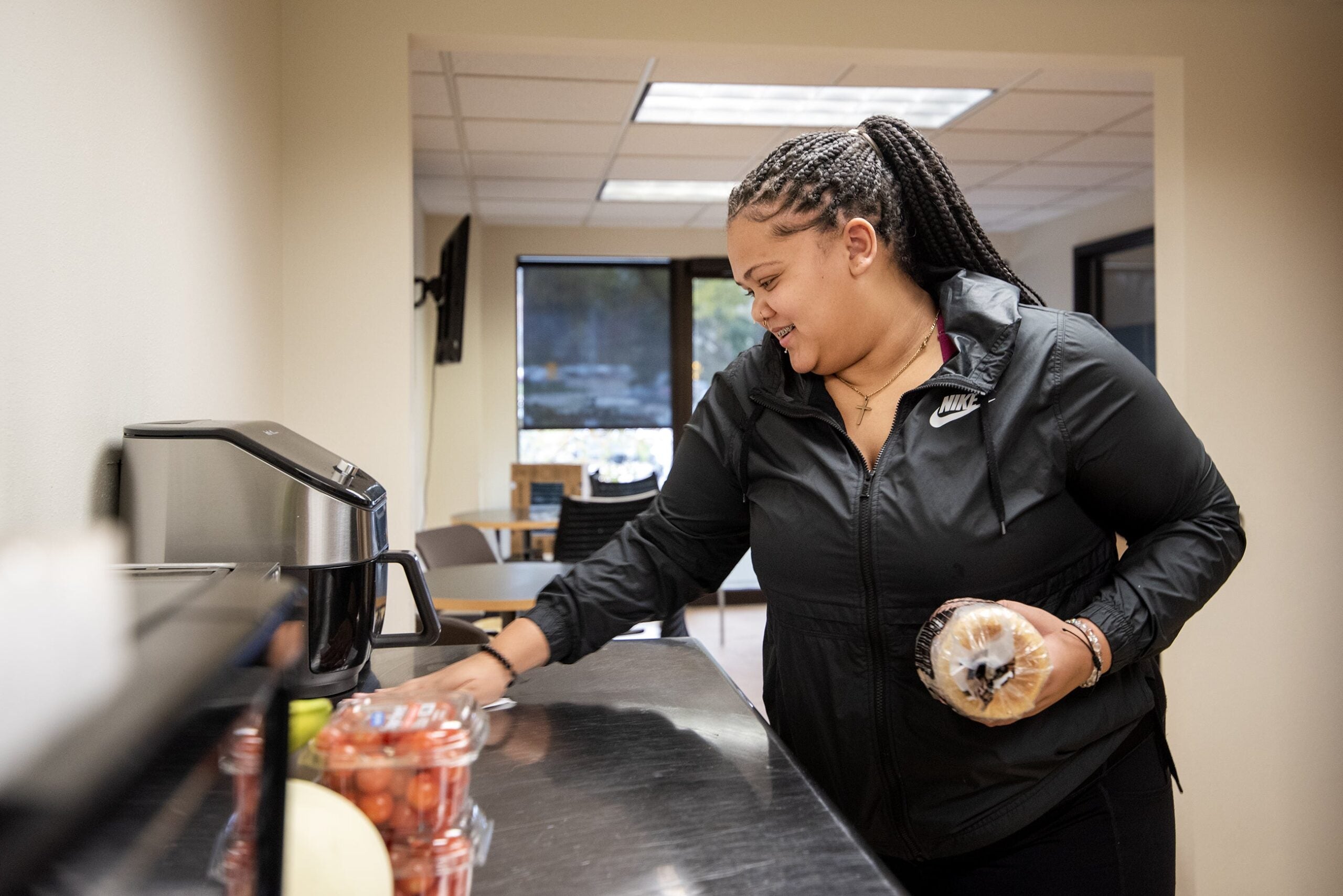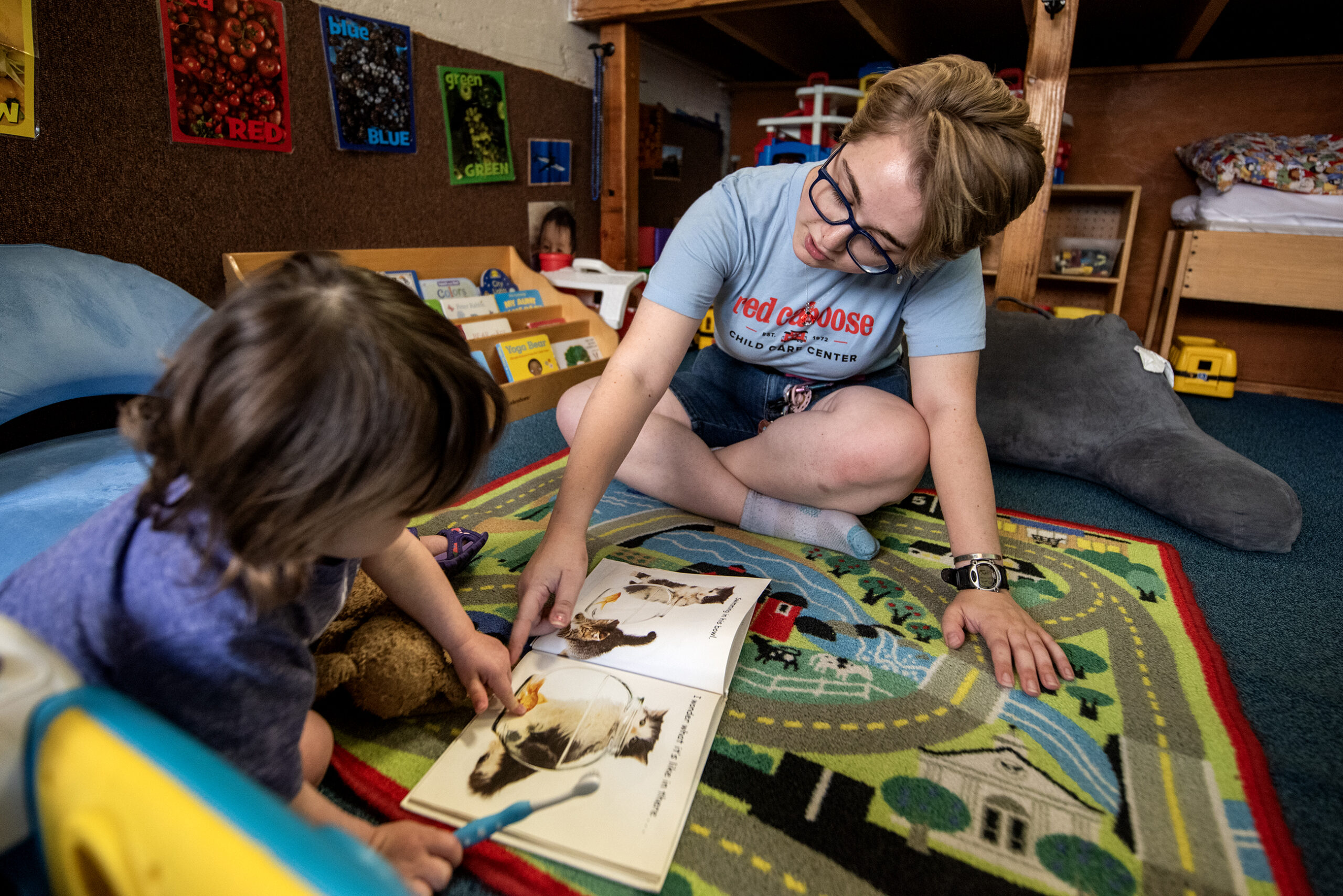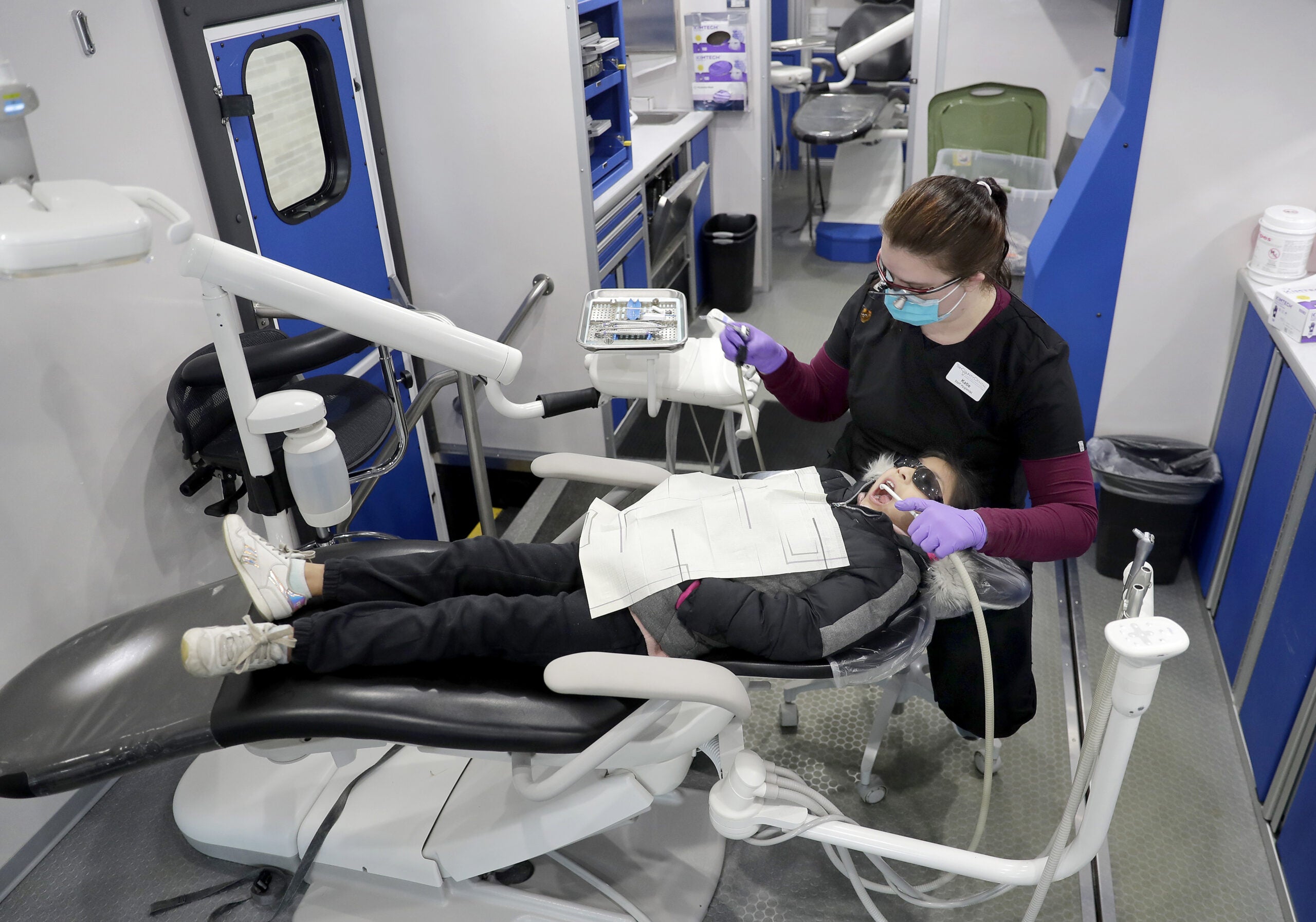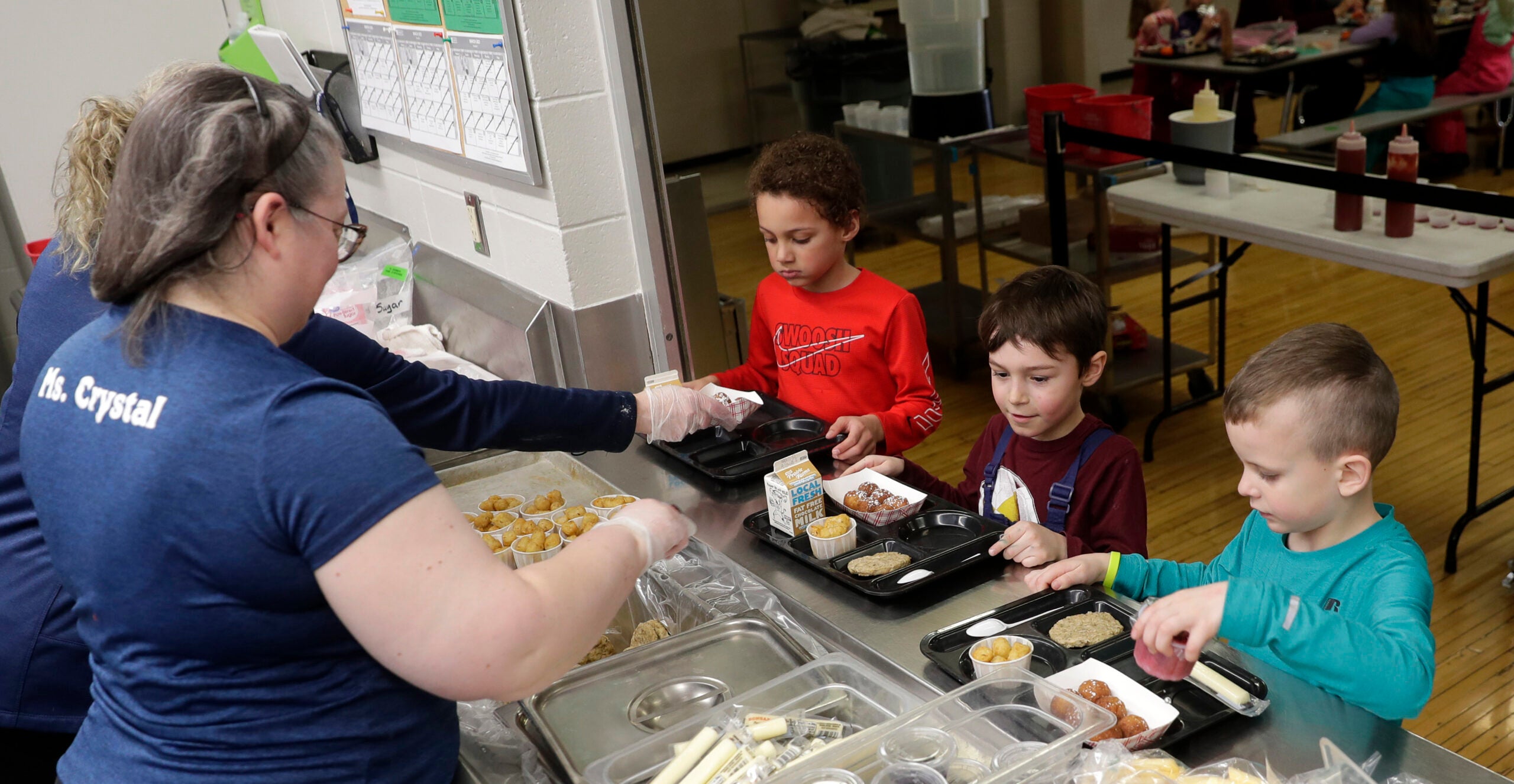On Wednesdays, the food service staff at Pulaski Middle School fans out to all the doorways with bags of food — this week, a choice between a peanut butter and jelly sandwich or a sub, with accompanying packages of baby carrots, applesauce and other fruits and vegetables. The district’s schools have been dismissing early on Wednesdays in the pandemic to allow for a weekly deep clean of the buildings.
This week, food service staff made about 315 lunches to hand out to a building of about 900 students. That number has varied throughout the pandemic as students have been out quarantining and demand has fluctuated, but it’s still a huge increase over the school’s pre-pandemic volume on early dismissal days, which was closer to 50 lunches.
Pulaski is one of many districts distributing more food this year. As part of the federal coronavirus relief legislation, school meals around the country are fully funded, regardless of student need, through the end of June. This is a departure from the usual policy of offering free- and reduced-price meals to families who qualify based on their income.
News with a little more humanity
WPR’s “Wisconsin Today” newsletter keeps you connected to the state you love without feeling overwhelmed. No paywall. No agenda. No corporate filter.
Caitlin Harrison, Pulaski’s nutrition director, said that after the initial closure of schools last March, the most important part for families who were picking up food at school seemed to be that little slice of normality — seeing their usual cafeteria workers and returning to their school grounds. As the coronavirus closure extended from its anticipated two weeks to the rest of 2020, that changed.
“That conversation has shifted to, ‘This has become a need for my family, and it’s so nice to be able to know that I have something to rely on,’” she said.[[{“fid”:”1455586″,”view_mode”:”full_width”,”fields”:{“class”:”media-element file-embed-landscape”,”data-delta”:”1″,”format”:”full_width”,”alignment”:””,”field_image_caption[und][0][value]”:”%3Cp%3ECaitlin%20Harrison%2C%20Pulaski’s%20nutrition%20director%2C%20points%20out%20boxes%20of%20food%20that%20have%20been%20prepared%20for%20families%20to%20pick%20up.%26nbsp%3B%3Cem%3EMadeline%20Fox%2FWPR%3C%2Fem%3E%3C%2Fp%3E%0A”,”field_image_caption[und][0][format]”:”full_html”,”field_file_image_alt_text[und][0][value]”:false,”field_file_image_title_text[und][0][value]”:false},”type”:”media”,”field_deltas”:{“1”:{“class”:”media-element file-embed-landscape”,”data-delta”:”1″,”format”:”full_width”,”alignment”:””,”field_image_caption[und][0][value]”:”%3Cp%3ECaitlin%20Harrison%2C%20Pulaski’s%20nutrition%20director%2C%20points%20out%20boxes%20of%20food%20that%20have%20been%20prepared%20for%20families%20to%20pick%20up.%26nbsp%3B%3Cem%3EMadeline%20Fox%2FWPR%3C%2Fem%3E%3C%2Fp%3E%0A”,”field_image_caption[und][0][format]”:”full_html”,”field_file_image_alt_text[und][0][value]”:false,”field_file_image_title_text[und][0][value]”:false}},”link_text”:false,”attributes”:{“class”:”media-element file-full-width”,”data-delta”:”1″}}]]
Pulaski has been managing a mix of in-school cafeteria lunches and curbside pickup since the schools reopened for students earlier this school year. In-person learners are split between the usual cafeteria and an auxiliary gym to allow for better distancing — or picking up their bagged meals after 12:30 p.m. dismissal on Wednesdays. Families who have decided to stick with virtual learning or who are quarantining due to possible exposure can make an appointment to pick up bags of food and lots of little cartons of milk on Monday and Wednesday afternoons.
Schools have had to get creative to get that food into students’ hands, especially through closures last spring. Harrison said food service has been coordinating with school social workers and other staff members to make sure families who can’t get to the school for pickup still get their food. That’s even if it means a teacher or principal is swinging by their houses during lunch or after school.
“We have definitely had to learn to pivot quickly,” she said.
However, the broader eligibility — and accompanying federal funds — for school lunches has also made things easier. At the same time, COVID-19 has disrupted the usual school day, it has been complicating families’ finances. Some have lost jobs or had their hours reduced, pinging into and out of the usual free- and reduced-lunch eligibility criteria.
But with free meals extended to all students, these families are guaranteed a regular supply of food, including recommended servings of fruits and vegetables, regardless of changes in their financial situations.
“A lot of families have told us, as they made it through the line, ‘We never thought, or expected, that we would need something like this, but because of the situation that we’re currently in, it helps significantly,’” she said. “In any other time, they probably wouldn’t have qualified for free or reduced meals, but with them not having to apply for that this year, it’s allowed for a little bit more flexibility with their grocery budget at home.”
Understanding Food Insecurity And Trauma
Dr. Emilia Arana, director of the pediatrics department at the Sixteenth Street Clinic in Milwaukee, said irregular access to food during the pandemic, as some children aren’t in school and their families can’t get to food distributions, has exacerbated existing health inequalities.
“The lack of physical activity, the lack of access to food that was supplied at the schools, that creates food insecurity,” she said. “For some families, access to fast food, and for some kids access to food all day — and food that is not necessarily the healthiest. All that has created what we are seeing now, an epidemic of obesity that is getting worse, unfortunately, for communities that already had that challenge.”
She said the clinic has seen a significant increase in children showing symptoms of anxiety and depression, and an increase in suicidal ideation as a result of the pandemic and its related isolation from friends, teachers and loved ones. She said she is worried that food insecurity as a result of the pandemic will only increase those issues.
“We know that food insecurity can have long-term consequences because it’s a stressful situation itself, and we know that children that experience food insecurity, it’s a trauma,” she said.
Free Meals For All, Even After The Pandemic?
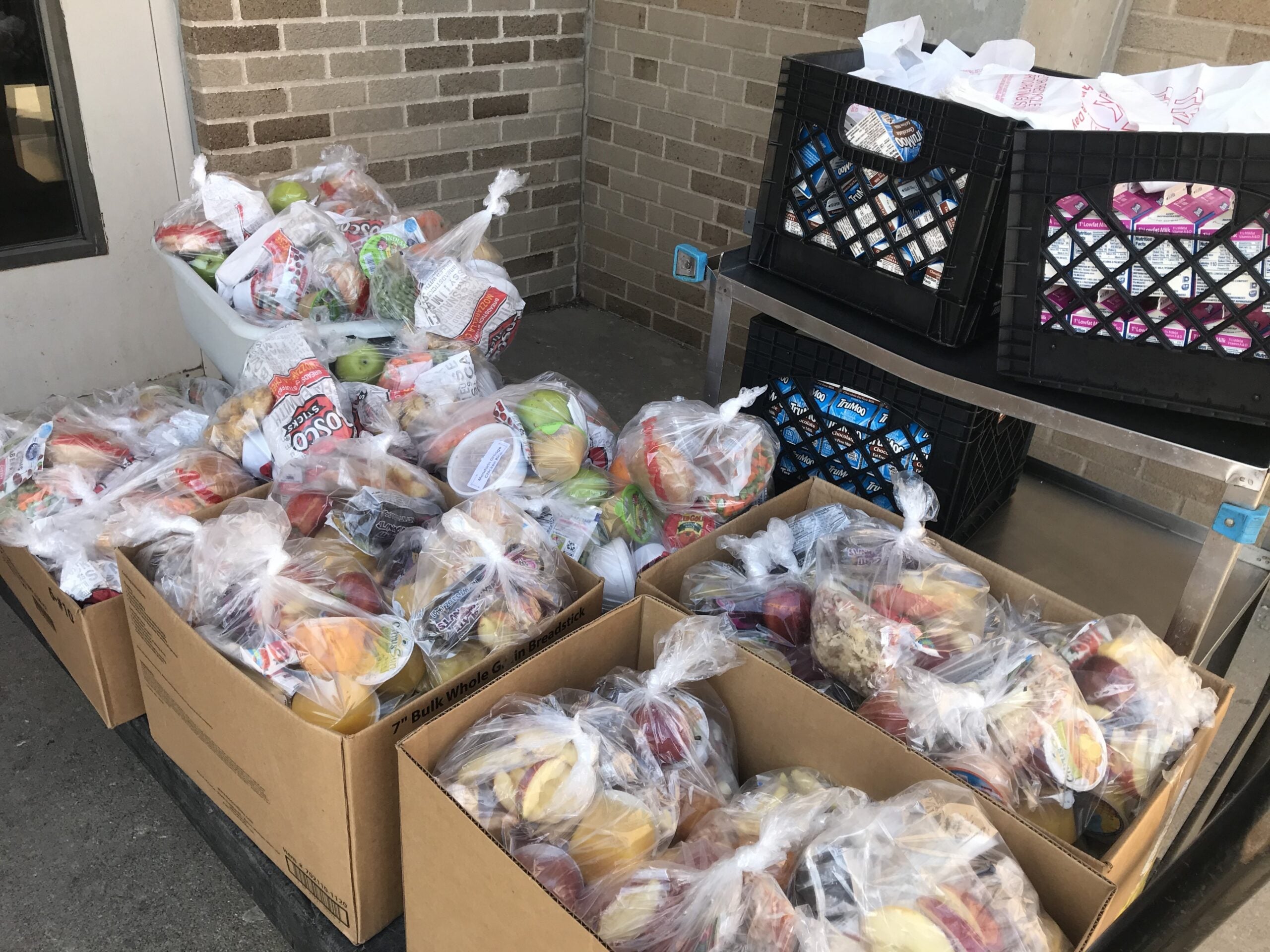
Some school nutrition experts are pushing to extend fully-funded meals past the pandemic. The School Lunch for All campaign has pointed to the near-year of opening free breakfast and lunch to all students because of the pandemic as proof that it’s better for students, families and districts.
Michael Gasper, head of the Wisconsin School Nutrition Association and the nutrition director for Holmen schools, wants to see schools provide lunches to students as a matter of course.
“We pay for desks, we pay for the (gym class) balls, we pay for the teachers, we pay for the towels in the bathroom for gosh’s sake,” he said. “We don’t make people pay for their textbooks based on their income level, yet we do that with food.”
He pointed to studies that have repeatedly shown that students are able to learn and retain information better when they aren’t hungry, as well as the semi-regular cropping up of viral school lunch-shaming incidents around the country as one indication that the pre-pandemic system was leaving some families behind.
Gov. Tony Evers’ proposed budget last month contained a provision to address that “meal shaming,” which would provide schools money to cover meal costs past what the federal government provides.
Gasper said making school meals universal could reduce some of the stigma for students who receive school breakfasts or free and reduced lunch, and have other benefits to the community as a whole.
“The reality is that when our programs are funded adequately, we have more money to spend on locally grown products, farm to school, healthier fresh fruits and vegetables,” he said. “When a program is struggling financially because people aren’t paying, it makes all of that very difficult.”
Wisconsin Public Radio, © Copyright 2026, Board of Regents of the University of Wisconsin System and Wisconsin Educational Communications Board.
